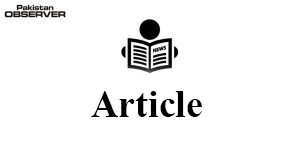Rameez A Mahesar
MEDIA has plunged into the age of technology. It has enjoyed its three ages. Gone are the days, the information was being conveyed through oral tradition like people used the light, kinds, simply symbols, or graphics and sounds. It was an era where dissemination of information served people only to survive. This phase of oral communication lasted thousands of years. The second phase media has exercised is a literacy age. This tenure can further be split into three proportions i.e. Pictograms, typography and the phonetic alphabets. The last one; typography is printing press. It entails the practice of writing crafts to move towards the electricity, as said Marshall McLuhan – a Canadian communication scholar. Here comes the third age, that is the rise of electronic communications. Here the word “communication” seems plural but it does not display the meaning in plural form. Because the word “communications” means the instruments, tools and means of communication. This phase was labelled as the age of electronic flow of information. This was the period that introduced the first use of the telegraph in 1844 to present-day. By the inception of the 20th century, the journey of electronic transmission from radio and television to the Internet is what we call today Information Age. Electronic communications, till today, have existed around seven to eight decades.
Also, it is noteworthy that present time, the stage of electronic communication and the dissipation of information has embraced the people across the world. Undoubtedly, Radio and television together have changed people’s use of leisure time, whereas the Internet is more destructive to change the entire media ecology. Beyond any shade of doubt, the internet has attained the amalgamations of a multiplicity of media. But the questions are; what indicates the decline in salaries of media workers of well-known television channels? What displays the removal of media workers from the jobs? These both questions are seriously posed here to be answered. An inclusive cum honest rejoinder to these both questions is; the media has been growing briskly in numbers but the users, reviewers, readers or even receivers have significantly been dropped. Overwhelming in everything is in real a big threat to itself. More the media are introduced greater the audience are split over. So, as the audience rating is clocked, it divulges the wane.
On the other hand, the dwindling in the entertainment section can also be one of the challenges the media faces. Take an example of India, it is the only country in the world having more than three dozen 24-hour television channels which transmit the multiple entertainment content, debates, quiz events, news and views occurring in the country, as discusses Iqbal S Sachdeva in his book entitled, “Public Relations Principles and Practices”. All media – print, television, radio, cinema, and Internet have heavily been growing simultaneously and are even more expected to rise in the foreseeable future, he adds. The circular which was issued by Herald Publication states that the print media in general and Pakistan Herald Limited in particular is facing a severe financial crisis. The business has extremely been affected because of extensive reduction in advertisement revenues and immediate abrupt rise in the cost of operations. This is what we can call it “the increase of other media” that divide the advertisements. By this, the different media earn a meagre amount of revenue through advertisements and then they willy-nilly remove the staffs and then they stage the strikes against their removal so produces the fracas. See how the situation gets aggravated.
Besides to removal of staff, there are other intricacies the staff suffers from are; cut in the salaries and the delay in their salaries to be paid. This trio of problems is really a big threat to media industry of Pakistan. The overall problem is too much intricate to solve. Let’s see how the situation started getting vandalized. Take an example of the first phase of print media. In the distant past, print version of media was minting money through its rapid circulation. The television boom has altered the vistas of printing age, it has diverted people from press towards itself, so the ratio of paper readers has declined. But when the internet banged, it frequently supplanted the television and radio as well. Now, television and radio have developed their own sites which they can transmit the ingredients online, though, the viewers can reap benefits everywhere. This seems advantage people reap of easy access to information on the one hand, but there is also a disadvantage of television sets’ sales are in decline.
VCRs, DVDs, radio devices and television sets neither are sold and nor can they be manufactured. This side of business is getting undersized and too frequently will be no more. Is not this a big threat to economy that is the real driver of media industry? Internet has shortened the newspaper readership, television viewership and radio listenership. This trio of things have started saying no to revenue, so has also raised the unemployment in the country. The licences to launch the sites are also carelessly issued to businessmen, who are not media degree holders at first and they start recruiting the people deprived of media degrees at last. The limit of sites should be fixed and then no licence should also be issued after the required number of sites is achieved. This strategy, then, at best be implemented. Whosever wants to apply for the licence to drive their site must be a media graduate. This criterion should be put in the policy. This problem direly needs the focus to be paid on by the media owners, government bodies and PEMRA in the bargain.
—The writer is an Independent Researcher and Member of editorial board of a Russian Research Journal of “Bulletin of Science and Practice”.










